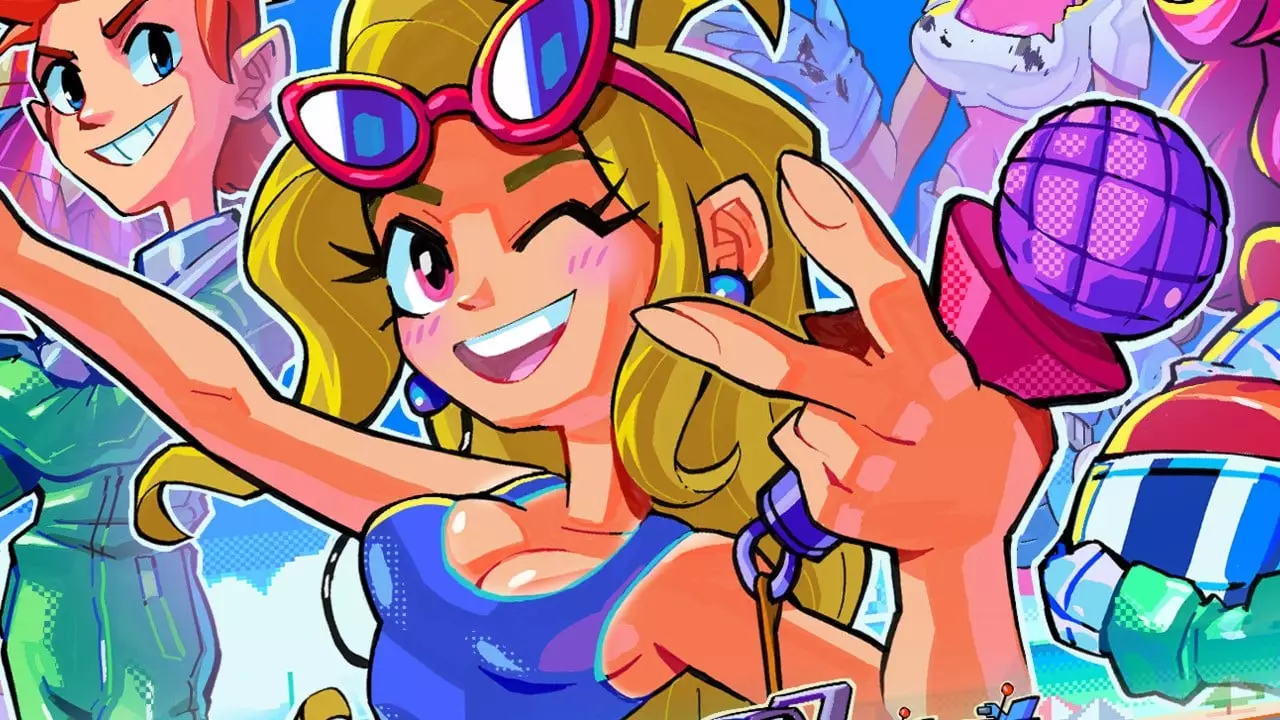Victory Heat Rally first made waves on Kickstarter in 2020, with promises to evoke the charm of Sega’s iconic Super Scaler arcade games from the 1980s. This promise stirred excitement for retro gaming enthusiasts hoping for a blast from the past that would channel a sense of nostalgia. Fast forward four years, and the release of the game on the Nintendo Switch marks a turning point—one that many may find underwhelming when compared to its ambitious roots. The vibrant, rollercoaster-inspired tracks hinted at in the Kickstarter trailer seem to have paved the way for a more generic racing experience, sacrificing the unique visual and gameplay elements that fans had anticipated.
Aesthetically, Victory Heat Rally has retained a fair amount of charm. Although the game deviates from its original artistic intent, the cel-shaded graphics offer a retro aesthetic that is visually engaging. The car designs feel reminiscent of chunky sprites from earlier gaming eras, which has its own appeal. However, beneath the surface, a deeper problem emerges: the game’s environments have transformed into the kind of conventional 3D settings that many modern racing games feature. While the cel-shading attempts to convey a simplistic, retro vibe, the illusion of depth and excitement is undermined by the standard polygonal graphics utilized in typical contemporary titles.
Gameplay Mechanics: A Double-Edged Sword
At its core, the gameplay revolves around a solitary mechanic: drifting. This singular focus makes the game relatively easy to grasp and allows players to master it quickly, which at first seems like a positive feature. The mechanics emphasize that holding a drift and executing turns effectively can yield speed boosts, leading to an enjoyable experience for players. However, the simplicity that once seemed advantageous soon devolves into monotony. When a game relies so heavily on one mechanic, the lack of variety becomes glaringly obvious as the Championship mode unfolds. Clocking in at around 5-6 hours, this mode mixes lap-based and rally racing experiences, but the repetitive nature quickly dulls the initial excitement.
The option to engage in split-screen multiplayer with up to four players provides a fun avenue for enjoyment, especially when competing with friends. In this setting, Victory Heat Rally does shine for its ability to remain visually clear, even when the screen is divided. While this element elevates the experience temporarily, the excitement tends to wane after multiple playthroughs. Once the novelty fades, players might find themselves gravitating toward more engaging titles that offer better replay mechanics or additional layers of complexity, which Victory Heat Rally lacks.
In a gaming landscape overflowing with competitors—particularly within the racing genre—it becomes increasingly crucial for titles to carve out their own identities. Despite its commendable effort to stake a claim in the retro-inspired realm, Victory Heat Rally falls short of triggering lasting engagement. Players may initially be drawn in by its simple charm, but the absence of unique features or compelling challenges makes it easy to overlook in favor of other indie racers offering depth and variety.
Overall, Victory Heat Rally delivers an experience that is unlikely to be remembered alongside its legendary predecessors or even modern racing games. While the game possesses qualities that can provide enjoyment, such as its retro visual style and accessible controls, it ultimately fails to leave a lasting impact. The departure from its Kickstarter vision and the reliance on a single gameplay mechanic renders it both simplistic and repetitive. In a genre where players seek both nostalgia and innovation, Victory Heat Rally may find itself lingering in the shadows of more dynamic alternatives, making it a fun distraction but not a memorable contender in the racing scene.

